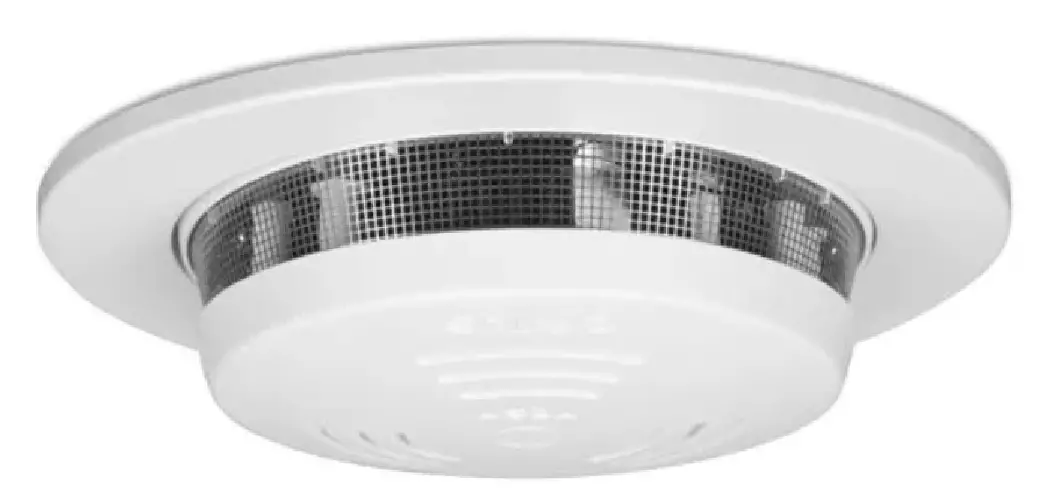Are you trying to figure out which smoke detector is beeping in your home? It can be frustrating and confusing, especially if you have multiple smoke detectors installed.
Detecting the source of a beeping smoke detector can be frustrating, especially when the sound echoes throughout a home or building, making it difficult to pinpoint its origin. However, identifying which smoke detector is sounding off is crucial for both safety and peace of mind. This guide is designed to help you quickly and efficiently locate the beeping device.
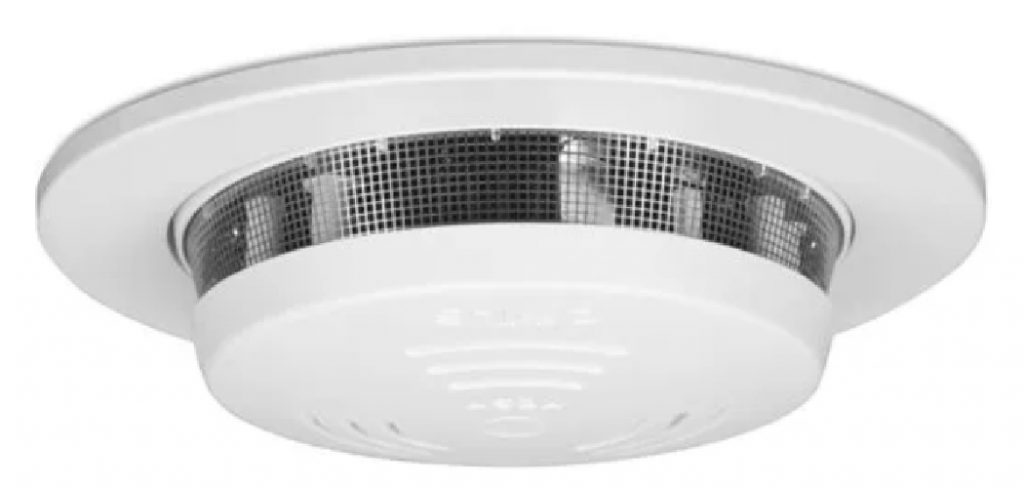
Whether it’s a low-battery warning, a false alarm, or an indication of actual smoke or fire, knowing how to know which smoke detector is beeping is essential. We’ll cover some practical steps to determine which smoke detector is sounding an alert and what actions you should take next.
What are the Causes of a Beeping Smoke Detector?
Before we dive into knowing which smoke detector is beeping, it’s important to understand the common causes of a smoke detector sounding off. There are several reasons why your smoke detector may be beeping, including:
- Low Battery: This is the most common cause of a beeping smoke detector and can usually be resolved by replacing the battery.
- Dust or Debris Buildup: Over time, smoke detectors can collect dust and debris, which can interfere with their sensors and cause false alarms.
- Malfunctioning Sensor: If a smoke detector sensor malfunctions, it may trigger false alarms or continuous beeping.
- End-of-Life Warning: Smoke detectors last 8-10 years before needing to be replaced. A beeping sound can indicate that the detector has reached its end-of-life.
- Actual Smoke or Fire: Of course, a smoke detector’s primary function is to alert you to the presence of smoke or fire. If there is actual danger, it’s crucial to act quickly and evacuate the premises.
Now that we have a better understanding of the possible causes let’s dive into the process.
What are the Benefits of Knowing Which Smoke Detector is Beeping?
It’s no secret that smoke detectors save lives. According to the National Fire Protection Association (NFPA), having a working smoke alarm in your home cuts your chances of dying in a fire by 50%. However, this statistic only holds true if you have functioning and properly installed smoke detectors.
Knowing which smoke detector is beeping can help you take the necessary steps to ensure that all of your smoke detectors are working correctly. It can also prevent false alarms and unnecessary evacuations, saving you time and hassle.
In case of an actual fire, identifying the source of the beeping alarm can help you quickly determine where the danger is coming from and take appropriate action. This knowledge can potentially save lives and minimize damages.
What Will You Need?
Before attempting to locate the beeping smoke detector, gather these essential items:
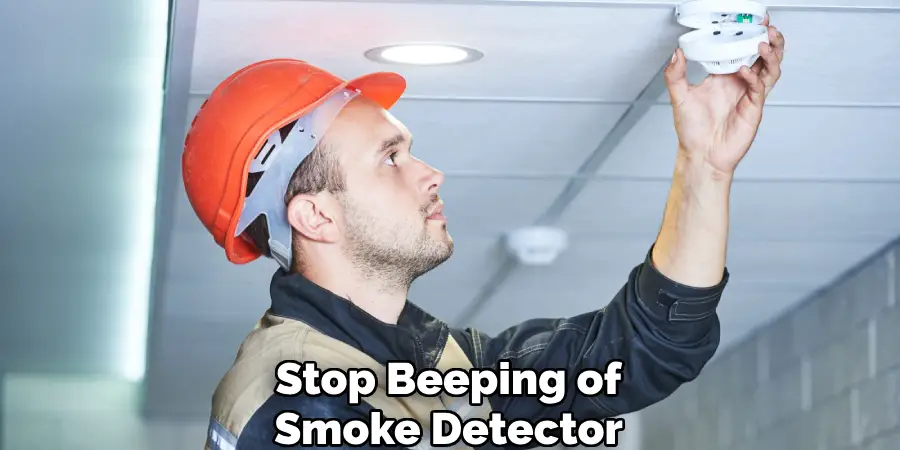
- A ladder (if needed)
- A screwdriver
- Fresh batteries (if necessary)
- Earplugs or earmuffs (optional but recommended for sensitive ears)
Once you have these items, you are ready to begin finding the culprit of the beeping noise.
10 Easy Steps on How to Know Which Smoke Detector is Beeping:
Step 1. Listen Carefully:
Begin by standing in the center of the area where the beeping is most audible. Beeping from smoke detectors is intentionally designed to be distinct and piercingly loud to grab attention. Wait for the sound to repeat, as most smoke detectors will beep in regular intervals when signaling low battery or malfunctions. Pay close attention to the direction from which the beep seems loudest. This method can help narrow down your search.
Step 2. Check the Light Indicator:
Most modern smoke detectors are equipped with a light indicator that either flashes or remains steady to signal different statuses. After identifying the general direction of the beeping sound, visually inspect each smoke detector in that area for any flashing or steady lights. These lights are usually red or green.
A flashing light often indicates a problem, such as a low battery or a malfunction, while a steady light may signify normal operation. Observing these indicators can help you quickly locate the beeping smoke detector without having to wait for the next beep. Keep in mind that you may need to dim the lights in the room or use a ladder to get a closer look at each detector’s light indicator.
Step 3. Press the Test Button:
Once you have a suspect in mind, safely use your ladder to reach the smoke detector. Press the test button located on the face of the unit. This action should trigger the alarm to sound, allowing you to confirm if this is the device that has been beeping.
Remember, during this test, the sound will be loud, so you may use earplugs or earmuffs. If the detector you tested is the source of the beeping, you’ll know right away. If not, proceed to test the next smoke detector in your home until you locate the right one.
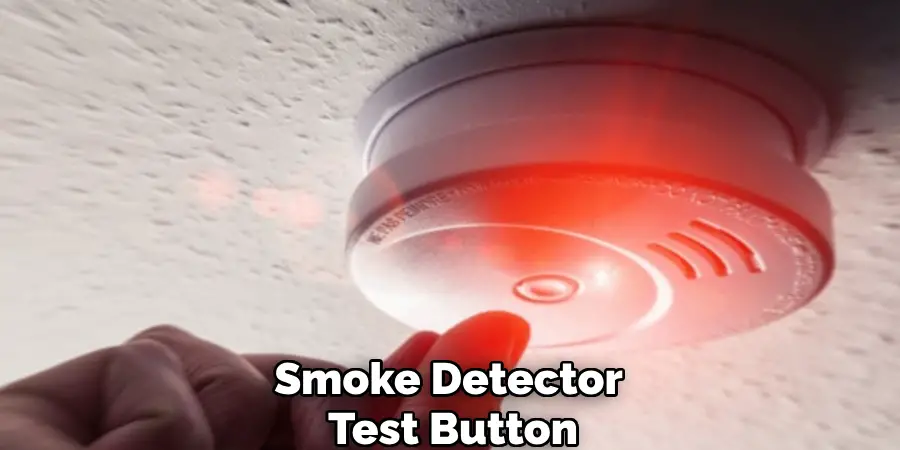
Step 4. Replace the Batteries:
If you’ve identified which smoke detector is beeping, the next step is to replace its batteries. Smoke detectors typically emit a warning beep when batteries are low to ensure their effective operation. Carefully remove the detector from its mounting bracket. Most models allow you to twist the detector counterclockwise to detach it.
Replace the old batteries with fresh ones, ensuring that they are properly inserted according to the polarity indicated. After replacing the batteries, reattach the smoke detector to its bracket and press the test button again to ensure it’s working correctly. If the beeping stops, you’ve successfully resolved the issue. If it continues, there may be another issue at hand, and further troubleshooting may be necessary.
Step 5. Clean the Detector:
Sometimes, the beeping is caused not by a low battery but by dust and dirt accumulation inside the smoke detector. If replacing the batteries didn’t stop the beeping, it’s time to clean the unit. Carefully remove the detector from its mounting bracket as before. Use a soft brush attachment on a vacuum cleaner to gently remove dust from the outside and inside of the smoke detector. Pay special attention to the sensor areas, as dust in these parts can lead to false alarms or beeping. After thoroughly cleaning the detector, reinstall it and press the test button to ensure it’s functioning correctly. This step often resolves issues with persistent beeping.
Step 6. Reset the Detector:
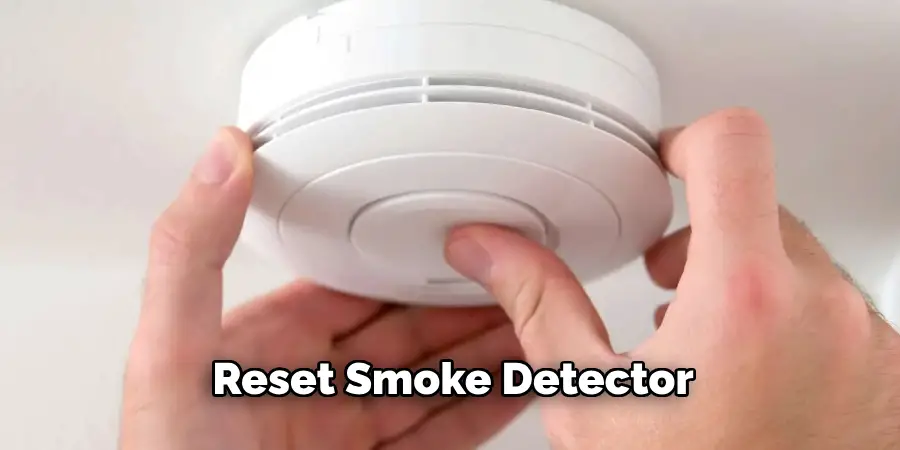
After replacing the batteries and cleaning the unit, if the smoke detector continues to beep, a reset may be required. To reset a smoke detector, disconnect it from its power source if it is hardwired or remove the batteries if it is battery-operated. Press and hold the test button for about 15 to 20 seconds. This action helps to discharge any residual charge in the unit and effectively resets it.
After holding the test button, reconnect the power source or reinsert the batteries. Attach the smoke detector back to its mounting bracket and press the test button once more to ensure it’s working correctly. A successful reset will typically stop the beeping and restore normal operation. If the beeping persists, the problem may be more intricate and require further investigation or professional assistance.
Step 7. Check for Interconnected Alarms:
If the beeping continues despite your efforts, check if your smoke detectors are interconnected. Many modern homes have smoke detectors wired together so that if one alarm detects smoke, all alarms will sound. This feature is designed for added safety but can complicate identifying the source of a beep.
To inspect for interconnected alarms, review your home’s smoke detector system manual or look for indications on the detector units themselves. Sometimes, a master reset of the entire system is required. To perform a master reset, turn off the power to all units at the circuit breaker, then turn it back on after a few minutes. Test each smoke detector individually to ensure they are all functioning correctly. This step can eliminate any confusion and ensure that your entire system is working as it should.
Step 8. Seek Professional Help:
If, after all your efforts, the beeping persists or you are unable to locate the source, it may be time to seek professional help. Contact a licensed electrician or a fire safety expert to examine your smoke detectors. Professionals can diagnose complex issues that may not be apparent to the average homeowner, such as electrical faults or deeper malfunctions within the detector itself.
They can also verify if your entire fire alarm system is up to code and functioning as it should. Remember, the primary function of smoke detectors is to safeguard you and your property against fire hazards, so ensuring their optimal operation is paramount.
Step 9. Maintenance and Regular Checks:
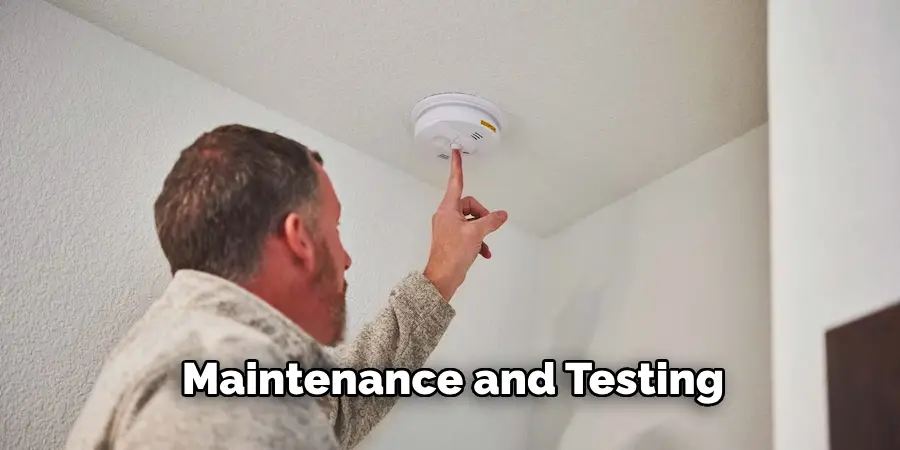
Establish a routine maintenance and testing schedule to prevent future issues with your smoke detectors beeping unnecessarily. It’s recommended that each smoke detector be tested monthly by pressing the test button and that batteries be replaced at least once a year, even if they haven’t started beeping.
Additionally, the entire smoke detector unit should be replaced every 10 years or as recommended by the manufacturer. Regular cleaning, as described in Step 5, should also be part of your maintenance routine to remove dust and cobwebs. These preventive measures will help ensure your smoke detectors remain in optimal working condition, providing peace of mind and enhancing the safety of your home.
Step 10. Document the Process:
After completing maintenance or troubleshooting with your smoke detectors, take a moment to document the process. Note the date of battery replacement, cleaning procedures undertaken, and any resets or repairs performed. Keeping a record can be invaluable for referencing your maintenance history and planning future checks.
This documentation can also be helpful for troubleshooting any future issues more efficiently and may provide useful information to professionals if further assistance is needed. Establishing a logbook or a digital record for your smoke detector maintenance ensures you remain proactive about fire safety in your home.
By following these steps, you can effectively troubleshoot and resolve beeping issues with your smoke detectors.
5 Additional Tips and Tricks
- Listen for the Echo: Stand in a central location and listen carefully. Sound reflects differently in various spaces; a beep might be louder and clearer in the direction from its original source. This trick can often guide you closer to the beeping smoke detector.
- Check the Light Indicators: Most smoke detectors have a visual indicator, such as a flashing light, that activates when the battery is low or when it detects smoke. During the beep, see which device has a light blinking in sync with the sound.
- Press the Test Button: Sequentially press the test button on each smoke detector. This process can help reset the device or indicate which one is malfunctioning and continuously beeping.
- Visual Inspection for Dirt and Dust: An accumulation of dust or cobwebs can sometimes cause a smoke detector to malfunction. Inspect each device for cleanliness; the one needing attention may well be your culprit.
- Silence All and Wait: If possible, use the silence button on your smoke detectors or disconnect them momentarily, then reconnect them one at a time. Wait a few moments to see if the beeping resumes, allowing you to pinpoint the exact smoke detector with the issue.
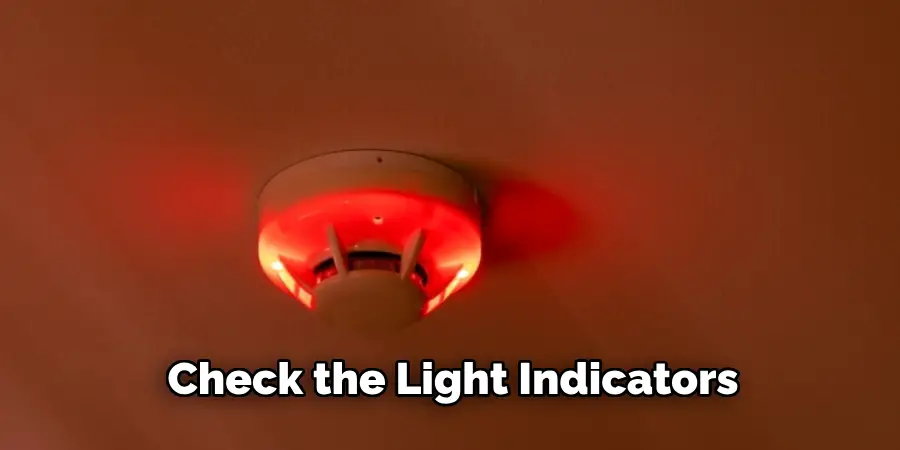
With these additional tips and tricks, you should be able to find the source of a constantly beeping smoke detector more easily.
5 Things You Should Avoid:
- Ignoring the Beep: Never overlook or delay addressing a beeping smoke detector. This sound often signals a low battery or a malfunction, both of which compromise your safety.
- Disabling the Smoke Detector: Avoid the urge to permanently disable a smoke detector because it’s beeping. While it may provide temporary relief from the noise, it leaves your home unprotected.
- Removing the Battery Without Replacement: Simply taking out the battery to stop the beeping is a common mistake. If you remove a battery, replace it immediately with a new one to ensure the detector remains operational.
- Using Water or Harsh Chemicals for Cleaning: If dirt or dust is causing your smoke detector to beep, never use water or harsh chemicals. Instead, use a dry cloth or a can of compressed air to gently remove particles.
- Guessing Without Testing: Trying to guess which smoke detector is beeping without methodically testing each device can waste valuable time. Always proceed in an organized manner using the tips provided to accurately identify the source of the beep.
By avoiding these mistakes, you can ensure that your smoke detectors are functioning properly and keeping your home safe.
What Does Red and Green Light on Smoke Detector Mean?
Red and green lights on a smoke detector can have different meanings depending on the specific model. Generally, a solid green light indicates that the smoke detector is operating properly and is connected to power. A flashing green light can indicate that the device has been recently reset or is testing itself.
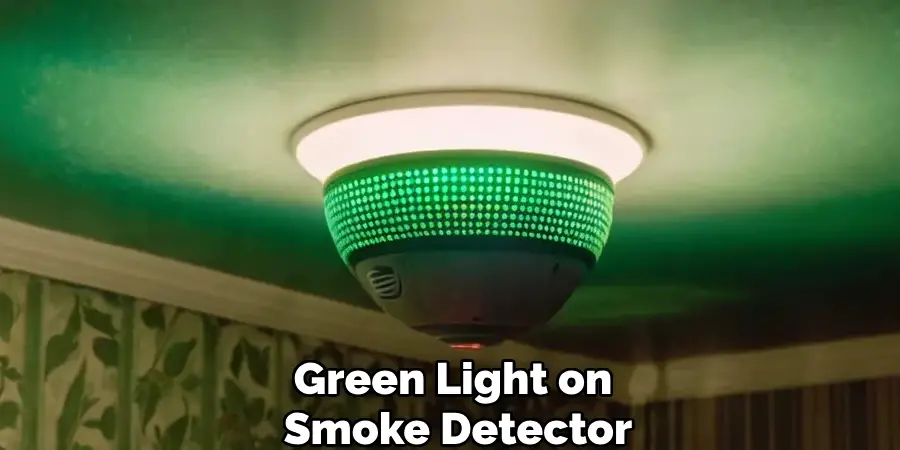
A solid red light typically indicates an issue with the smoke detector, such as a low battery or a malfunction. To fully understand the meaning of your smoke detector’s lights, it is important to refer to the manufacturer’s instructions for your specific model.
In some cases, a red and green light flashing together can signal an emergency, such as a fire or high levels of carbon monoxide. If you see this combination of lights on your smoke detector, evacuate immediately and call emergency services.
It is important to regularly check your smoke detectors for any red or green lights and address any issues promptly to ensure they are functioning properly.
How Do You Stop Your Smoke Detector From Chirping Without a Battery?
It is not recommended to stop a smoke detector from chirping without a battery, as it can compromise the safety of your home. The beeping sound is often an indication of a low battery or malfunction, and removing the battery completely will make your smoke detector non-functional.
If you are unable to replace the battery immediately, there are some temporary solutions that may help stop the chirping noise temporarily. Some smoke detectors have a “hush” button that can silence the beeping for a short period of time. Try gently cleaning the device with a dry cloth or using compressed air to remove any dust or debris.
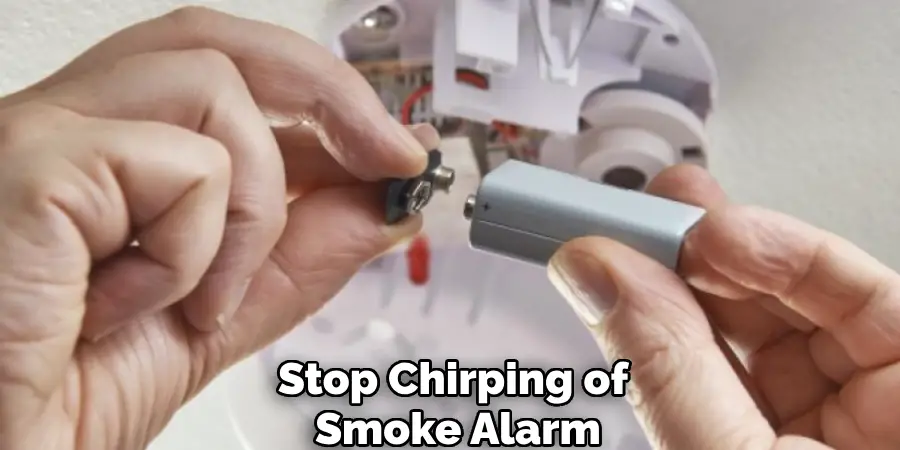
However, it is important to note that these solutions are only temporary, and you should replace the battery as soon as possible to ensure your smoke detector is fully functioning. Additionally, constantly chirping smoke detectors can be a sign of a larger issue, so it is important to regularly check and maintain your devices to prevent any potential problems.
Conclusion
How to know which smoke detector is beeping in your home or office may seem daunting at first, but with the right approach, it is a manageable task. By systematically employing a series of practical steps and tips—ranging from listening for echos, observing light indicators, pressing the test button, conducting visual inspections for cleanliness, to silencing all devices temporarily—you can efficiently determine the source of the incessant beep.
However, it is crucial not only to identify but also to rectify the root cause, whether it be replacing a low battery, cleaning dust accumulation, or addressing more serious malfunctions.
Hopefully, this guide has provided you with valuable information on troubleshooting a beeping smoke detector and avoiding common mistakes. Stay safe!

